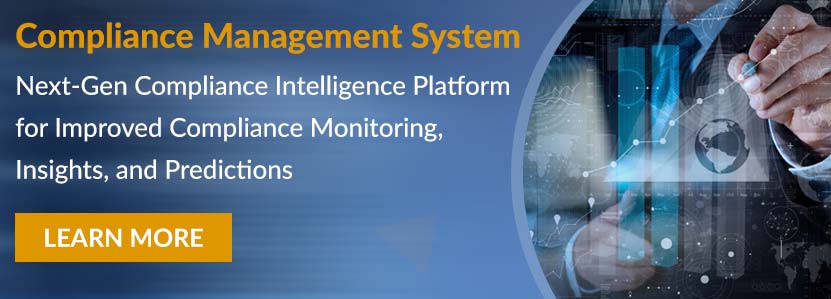Home/ Blog / How Collaboration Tech Transforms Risk and Compliance Management
Synergy has been the theme of technology and businesses for the past few decades, and it is easy to see why so many businesses want increased synergy. The use of information technology made data easier to store and analyze, which unlocked the benefits of combining different data systems. Ensuring that different processes are in sync has two significant benefits. The first major benefit is that the redundant processes shared by various tasks can be eliminated, saving lots of time and effort. The second important benefit is that synchronized domains are easier to manage and provide businesses with an enhanced understanding of how different domains affect each other—the enhanced understanding results in better analytics, monitoring, insights, and much more.

Risk and compliance management technology has truly matured in the past decade. There were many different tools that helped with different processes in both risk and compliance domains. Only the largest enterprises had risk management systems and compliance management systems integrated, and that too was mostly as expensive bespoke systems that were not very efficient. In contrast, today’s risk and compliance management platforms are not only affordable but also much more efficient. They also enable businesses to easily synchronize the risk and compliance domains within the organization.
There has been a lot of discussion on how different risk technologies help risk managers and also on how different compliance technologies help compliance managers. There is also a need to focus on the significant improvements businesses can observe by enabling better coordination between the risk and compliance departments.
Increasing Operational Efficiency
The most obvious and immediate benefit of providing a collaborative platform for risk and compliance teams is the immense increase in operational efficiency. Bringing risk and compliance management under the same platform helps remove redundancies throughout the risk and compliance framework. Many different risk and compliance processes require the same information or background work to be done. Collaborative platforms ensure that once someone in the risk or compliance department has completed a process, the results from that process are available to all authorized users in both departments.
Managing risk and compliance on the same platform makes it easy for the executive members of the organization to keep an eye on the risk and compliance platforms. Share on XThe most obvious enhancement in risk and compliance collaborations occurs in tasks that relate to both domains. Compliance risk assessments are a good idea of risk and compliance management intersecting. Under a unified risk and compliance platform, the compliance managers can easily pull in risk data to prioritize the assessment of compliance policies and procedures. Similarly, the risk team can look at the compliance risk assessment to understand the organization’s overall risk exposure.
Enhanced Visibility for Management
Managing risk and compliance on the same platform makes it easy for the executive members of the organization to keep an eye on the risk and compliance platforms. When both are being managed separately, the reporting being done on both domains is also separate. This separation of the two domains creates a disconnect for other members of the organization. The experts in the risk and compliance department are well-versed in their own domains and the interactions between risk and compliance.
The interactions between risk and compliance may not be immediately obvious to the members of the board or the managers in other departments. Bringing risk and compliance on the same platform makes it easy to see the big picture. The Board of Directors can see the risk and compliance management framework operating in real-time. They can drill down to get more information about any individual aspect of the risk and compliance framework whenever needed.
Increased Insights and Predictions
Connecting the dots between different risk and compliance data streams also opens the door for more and better insights and predictions. Instead of simply seeing risk data in risk reports and compliance data in compliance reports, the analysts at the organization can access and analyze all the risk and compliance data they need under one platform. Businesses can link different compliance and risk metrics to better understand how they affect each other. There are many compliance metrics that act as leading indicators for risk issues and vice versa. Connecting such metrics can give business predictions about risk and compliance metrics.
Financial organizations should look for a solution that enables the risk and compliance teams to collaborate painlessly. A painless collaboration is only possible if both the risk and compliance teams have their workflows on the same platform. Such an arrangement ensures that they can be as efficient as possible in their domain. The platform should handle the collaboration, ensuring the smooth transition of tasks and dissemination of information.
Interested in seeing how such a solution can help your organization? Get in touch with our experts for a look at Predict360 – endorsed for risk and compliance by the American Bankers Association.
Request a Demo
Complete the form below and our business team will be in touch to schedule a product demo.
By clicking ‘SUBMIT’ you agree to our Privacy Policy.




